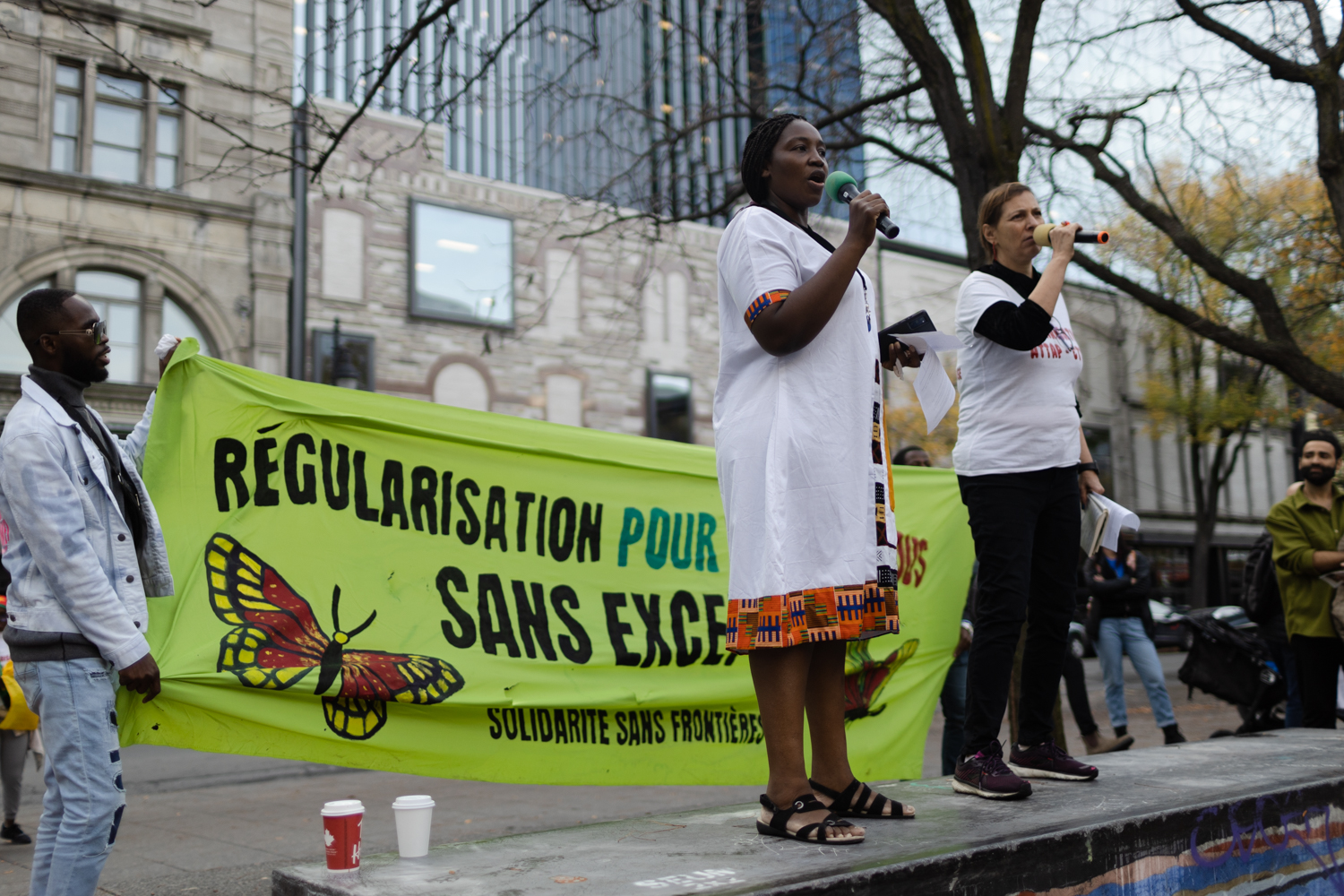While the federal government is working on a regularization program for immigrants with precarious status, immigrant advocacy groups demand that they be inclusive of all people in Quebec
Immigrant advocacy groups gathered at Peace Park on Sunday Nov. 6 for a protest demanding that the new federal regularization plan be fully inclusive of all immigrants without status. The program that the federal government is currently working on would allow non-status workers to become permanent residents.
Advocates for the rights of people with precarious status are skeptical whether or not this program would be sufficient. On Nov. 9, various Quebec-based organizations dedicated to supporting migrants gathered in front of the office of Christine Fréchette, the Minister of Immigration, Frenchisation and Integration to demand the plan be expanded to include all undocumented immigrants.
“The program that we heard about is being built for migrants with precarious status and is going to be a regularization plan,” said Aboubacar Kane, a member of the advocacy group Solidarity Across Borders. “So us being actors and living the situation and being faced with the reality, we just wanted to prevent it from being a selective program but for it to be an open program to all migrants so everyone has access to it.”
During the demonstration, advocates denounced the living and working conditions of people without status in Quebec. Until undocumented immigrants are regularized, it will be impossible for them to access fundamental rights and services.
Carlos Rojas-Salazar, Director Operations and International Affairs for the Association for the Rights of Household and Farm Workers (RHFW), explained that immigrant workers who are overrepresented in the agricultural field in Quebec possess fewer legal rights than Canadian workers despite facing harsher working conditions.
“Without them, the whole agricultural industry would be nothing,” said Rojas-Salazar. “When people come here, they find themselves living in crowded rooms, we have seen beds stacked on four levels, with minimal maintenance and that’s just terrible.”
Rojas-Salazar explained that the inadequate working conditions of undocumented workers was brought to the RHFW’s attention, including amid the pandemic when workers got sick at a much higher rate when compared to the rest of the population. The RHFW has found that, because of the labour and a lack of services, immigrant workers are at greater risk of developing chronic health problems.
“What we’re doing is we’re importing healthy people and we are sending back to their countries people with dramatic conditions, with chronic diseases, people at 45 years old that have the back of an 80-years-old,” explained Rojas-Salazar. “This is the case for men, which in Quebec account for 90 per cent of the workers and for women it’s even worse.”
According to Rojas-Salazar, immigrant workers are also more at risk of being exploited compared to their Canadian counterparts since they have no legal recourse and might fear being deported or detained if they speak up. “Why should Canadians care about this? Because when you have people who are being paid less, who don’t have rights, you open the doors to crime, to abuse, people don’t have the right to go complain because they are afraid, they’re afraid of losing opportunities so they shut up,” he said.
Kane added that in making its proposal for the program, the federal government should be careful not to think solely in terms of immigrant workers but also include those who cannot work.
“The government is always speaking of the workers, the people that can contribute but they forget that there are elders, children inside of it too — people that cannot necessarily work that need to be included too,” said Kane.
He believes that a fully open regularization plan would allow immigrants without status not only to have access to the fundamental rights and services that permanent residents and Canadians are entitled to, but also to feel overall more included in the society.
“It is a solution because it’s going to allow access to healthcare, to coverage, to services that people don’t have,” Kane said. “The psychological state of the people is also going to change, it’s going to relieve stress from them, all the trauma that they lived from being excluded from society is not going to be gone but at least taken care of and it’s going to help them feel equal, well-treated and part of this society fully.”
